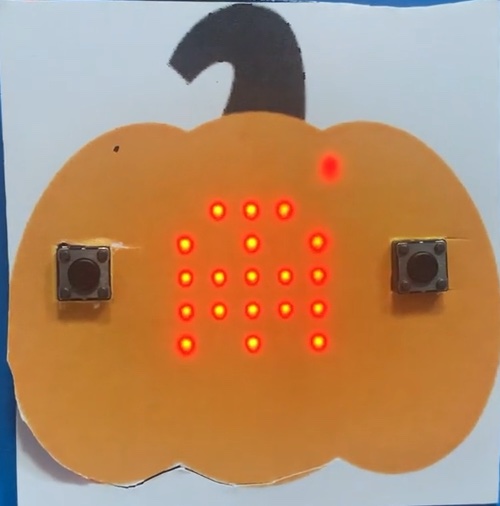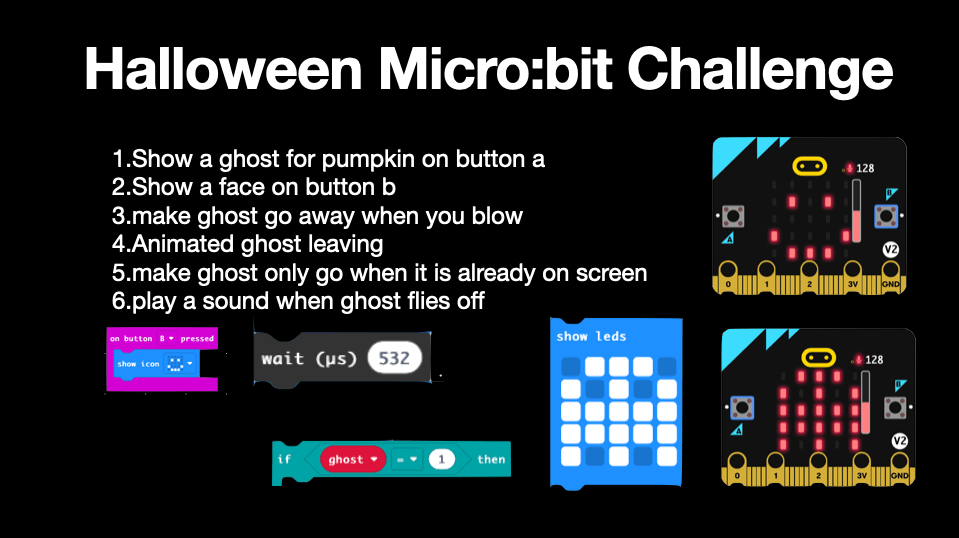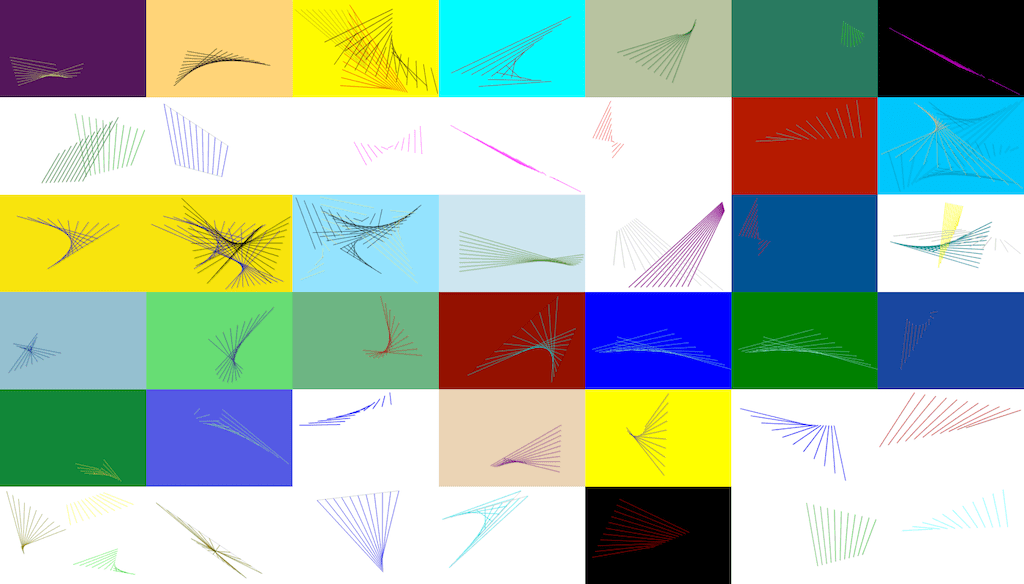Read: The Three-Body Problem by Liu Cixin ★★★☆☆ 📚
I found the Cultural Revolution section interesting, the detective predictable, the physics and harder sci-fi lost me. I did finish it though.
We’re on the eve of the Elon Musk / Twitter deal closing. In his Dear Twitter Advertisers letter, Elon writes: The reason I acquired Twitter is because it is important to the future of civilization to have a common digital town square, where a wide range of beliefs can be debated in a healthy mann...
The common digital “square” should be the entire web, with a diverse set of platforms. There should be common APIs but many communities with their own rules, goals, and business models. Concentrating too much power in only a couple social media companies is what created the mess we’re in. The way out is more platforms, free to make the best decisions for their users knowing that there are options to leave and less lock-in for developers.
Manton always seems to hit the nail on the head.
Micro:bits Halloween Project

The Village of Banton, where I teach, celebrates Halloween on the Friday before the 31. Which is nice ’cause you can have a Friday party. We had one yesterday afternoon, in the morning we did some halloween related work.
When I sat down at my desk yesterday morning I had a quick look at twitter. I’d been in a conversation over breakfast. I ended up having a quick scroll through Mr Morrison‘s timeline. I saw a couple of interesting micro:bits things:
https://twitter.com/SSERCDigital/status/1585251905428918272
and
Grade 4 students coding jack-o-lantern faces with micro:bits in the LLC this week.@StLeoCS @DCDSB_STEM @DurhamCatholic @microbit_edu #halloweenstem
Found the template here: https://t.co/3dp9wJm1uc pic.twitter.com/tesE0Kk1Yh
— MrsBintheLC (@MrsBintheLc) October 19, 2022
The first was to blow away a ghost. I couldn’t see instructions, but presumed it would be simple enough to figure out. The second was really simple, but linked to a blog post which had a nice wee pumpkin cardboard template that fitted a micro:bit.

My class have done a varying amount of coding, so I though we could do this as a stepped challenge. The more experienced could help the other out.
I printed off the templates and cut out the holes for the micro:bit buttons. I’ve found that making a neat job of these is difficult, but helps keep the cardboard on the micro:bit. Quite glad I’ve got a small class.
I then worked out and made the code to, add a face to the pumpkin with button A and a ghost with button B. Blowing on the micro:bit would blow (animate) the ghost off the screen.
I made a quick slide with the challenge and pictures of a few useful blocks.

We started the lesson by being really quiet and watching me demo. The class is 1-2-1 iPads and we use the micro:bit editor, we have enough micro:bits for one each too.
My though was that the least experienced could manage 1, 2 & 3. I hoped the images of the blocks would remind the others of enough to get them started on the harder ones.
Most of the class managed the first couple of tasks straightaway. To my surprise quite a few asked to skip the third. The vanishing ghost was too tempting.
The next step, to animate the ghost away on a sound was managed by quite a few of the class. The tricky part was only showing the animation if the ghost was on the screen. A few, having seen the clues on the slide, created variables to test for at the start of sound block. We did need to stop a few times to figure out when and where to toggle the variable and how to test for it in the right place. Lots of useful mistakes were made.
By this point a few children had managed to solve the complete problem, adding some sounds to their animation. They could then help, (without using their fingers), their peers. A couple of the class didn’t manage to get the whole thing done, not getting a full understanding, but they all managed at least some of the challenge.
Given the class have done at least a couple of recent micro:bit lessons covering inputs and decisions the challenge approach worked well. Some had used code that was not particularly efficient. Some strange and unnecessary repeats. I am not really sure my own approach to the code was the best.
As everyone put the finishing touches, cutting out pumpkins and tweaking code I though we could finish with a quick demo of the radio feature. For this bit I did just put the code up on the board.
One child, remembering radio code from previous years volunteered to make the controller. We finished by testing and recording the radio controller, setting all the micro:bits to show a ghost via the controller and getting all the ghosts to fly off by shouting boo!
A few interesting points emerged
- This idea came to me though some tweets at around 8:00am I had to through some resources together before 9, scrap (recycle) some of the morning plans. The final section, using the radios, just came to me while teaching and extended the process by half an hour. I am sure this says something about my professionalism & planning.
- Working through the logic is hard. The children with more experience are beginning to be able to debug sometimes. Noticing typos (or bad values for variables, blocks avoid a lot of these problems) you have made or miss-ordering or putting blocks in slightly the wrong place is easy. I was listening to a WordPress lesson driving into work on Friday and noticed that the tutor, presumably prepped and a confident coder, still made mistakes like these.
- Somethings just didn’t work. Adding sound work if we used the play sound block with pre add sounds. Using the melody block or the block that plays sounds you write yourself tended to cause problems. All the code would stop working after a while. I am not sure if it is a bug or problem with the micro:bits or we just don’t know something.
- A couple of pupils had exactly the correct radio code but it just did not work exactly as expected. The code used an if else block to switch depending on if it received a 1 or something else. The micro:bits just executed the first choice every time. The pupils and their pals couldn’t see any problem with the code and neither could I.
- Most of the class wanted to get to the more dramatic bit of code quickly and asked to skip the simple animation of the face. Quite a few wanted to work in the code editor without testing their code until they got to the end. I was quite happy with the skipping bits but I did ask them to do quick tests as they went along.
- One pupil who had got into a bit a mixup with the code had made a nice change to the animation, the ghost going off the screen at an angle rather than straight up.
The micro:bit editor has a nice print feature, I used it to make the featured image for this post.
Repost: Banton Primary Tweet
took an idea from @SSERCDigital added some pumpkin from @MrsBintheLc added in some radio control and had fun with out @microbit_edu micro:bits @NLDigitalSchool @DigiLearnScot
Halloween Micro:bit fun pic.twitter.com/UNpJ5wmvP2
— Banton Primary (@Banton_Pr) October 28, 2022
Feedland Notes
Feedland went public today. I’ve been lucky enough to have been testing it and following its development for the last few weeks.
Feedland is a lot of things, all to do with RSS feeds. First it is a place to gather and organise feeds. Second it can be a place to read these feeds. Third it allows you to publish a ‘news product’ which you can share so that others can read the news from sets of these gathered feeds. Fourthly it is a place were you can see what feeds other users have gathered.
Feedland was built by Dave Winer who
pioneered the development of weblogs, syndication (RSS), podcasting, outlining, and web content management software;
So it has an interesting pedigree and is opinionated software. Dave has had as long a relationship with RSS and OPML as anyone on the web and in an excellent position to have opinions.
Feedland is developed with an eye to interop. Feeds to get information out abound. For example the widget on my sidebar uses the Sync OPML to Blogroll plugin to sync my blog role from the opml list of feeds I’ve subscribed to in Feedland. I could also use this to control the feeds I view in an rss reader like inoreader which supports external opml.
Dave says:
FeedLand is all about people, feeds and news.
One of the most attractive, to me features, is the possibility of communities being loosely organised around the sharing of feeds. It is easy to see the feeds another user has gathered and to add them to your own list with a handy checkbox.
Feedland is still developing. I’d recommend a look at the docs and there are some interesting views starting to appear for the early adopters.
I’ve only touched on a few to the things about Feedland I’ve found interesting so far. There is a lot more to this app already and lots more to come.
Read: Autumn by Ali Smith ★★★★☆ 📚
Partly a lovely story about the relationship between a girl who becomes a young woman and an old man who gets older. Dreams, time, reputation. I am sure much went over my head but I loved this.
Hi Aaron,
Thanks for this link, your pull quote is perfect. As a recovering gif masochists it really struck a chord. I never aimed for perfection just some strange self imposted notion around file size. I blame #DS106 for my may years of gif-addiction.
I don’t know if I’ll every break completely free, yesterday an image on my camera roll cried out for giffing. The modern way, an iOS shortcut resulted in a 2.2MB monster. After a fair bit of command line, with Eddie Kohler’s gifsicle, I eventually opened an older version of Mac os on parallels that could run FireWorks to to squash it to 448KB.
Although making gifs is redundant & silly, it has given me so much fun over the years and I like to feel taught me a lot.
Read: Treacle Walker by Alan Garner ★★★☆☆ 📚
Short full of allegory, symbolism & english folklore, most of which I am sure I missed, but I enjoyed listening to the strange dialect & nonsense words.


